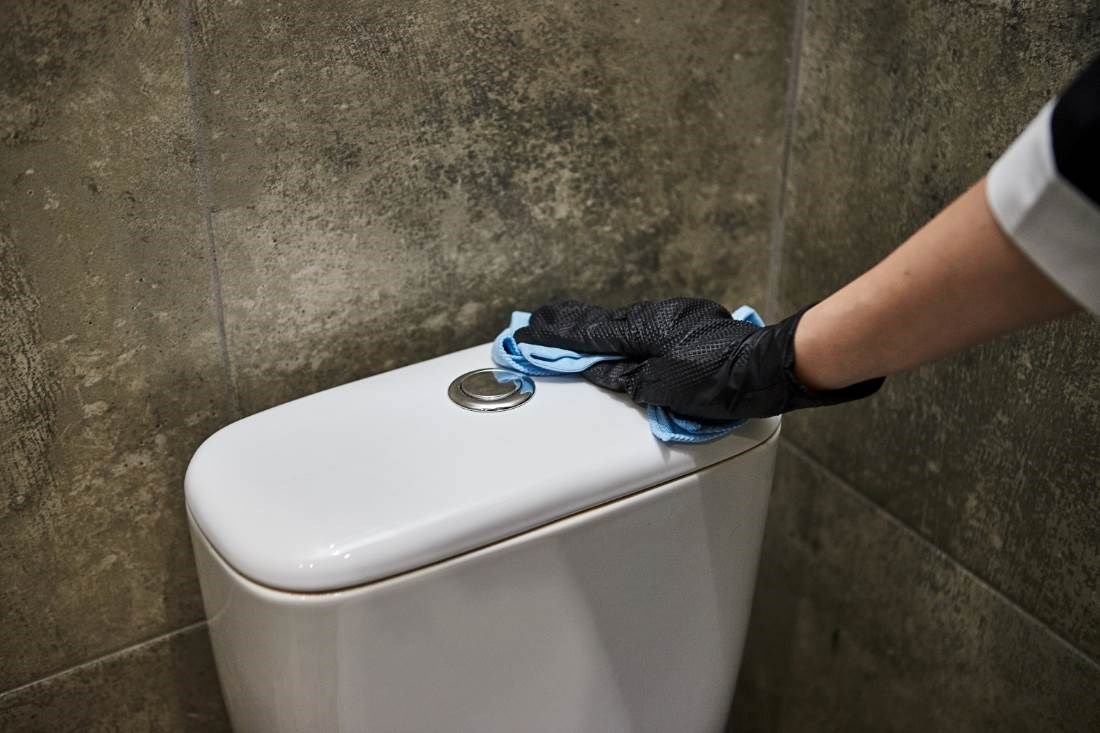How To Clean Toilet Tank Properly And Why It Is Important

The toilet bowl tank is one of the most overlooked spots in the bathroom for cleaning. With a single push of a handle or button, toilet tanks immediately flush away the toilet waste.
Depending on the water type, toilet tanks can harbor rust, mold, mildew, and bacteria that can cause unpleasant odors and impair your toilet’s functionality and longevity. Therefore, you must regularly clean your toilet water tank to prevent all that from happening.
Rest assured if you're uncertain about the proper toilet tank cleaning method. Keep reading our “How to clean toilet tank” article; we will guide you through the entire process with straightforward steps.
**Cleaning toilet tank has never been this effortless, thanks to everyday toilet cleaning products such as water tank blocks and bathroom cleaner trigger that are readily available.**
Related: How to use Harpic bathroom cleaner
How often should you clean your toilet tank
It is advisable to clean the toilet bowl tank at least twice a year. However, cleaning the tank every three months is recommended if you have hard water. Additionally, cleaning the toilet tank monthly in a warm and humid bathroom environment susceptible to mold growth is best.
What do you need to clean the toilet tank
- Rubber gloves
- Scrub brush with a long handle
- Sponge
- Disinfectant
- Toilet blocks
How to clean a toilet tank with Harpic disinfectant spray
Here’s how to clean a toilet tank in four simple steps. Note: Remember that the toilet will be temporarily unavailable during cleaning, so plan your cleaning time accordingly.
1. Find the water valve
The initial step in the process involves completely emptying the toilet water tank. To achieve this, locate the water control valve responsible for halting the water flow.
Typically, this valve is on the wall behind the toilet tank or near the toilet base. Next, rotate the control valve clockwise to stop the water flow.
2. Drain the toilet tank
Remove the toilet tank lid and set it aside. Then, flush the toilet repeatedly until the tank fully drains. Remember, the flushes required may vary depending on the tank size.
2.5 Cleaning the toilet bowl
Since multiple flushes are necessary to empty the toilet tank, use this opportunity to thoroughly clean the toilet bowl using Harpic’s active fresh citrus cleaner to remove limescale, stains, germs, and bacteria.
3. Cleaning the toilet tank
Wear rubber gloves, pick up the scrub brush, and thoroughly clean the interior walls of the tank, effectively eliminating any gunk, buildup, or accumulation. Additionally, use a sponge to wipe down the metal components, ensuring the removal of any rust present.
If your toilet's internal components require maintenance or replacement, this is the best time to address them.
4. Sanitize with disinfectant cleaner
Apply a bathroom cleaner trigger to the interior walls and floor of the toilet tank. This toilet cleaner effectively eliminates stains and 99% of germs. Allow the disinfectant to sit on the surfaces for a minimum of 10 minutes before using the brush to scrub it away.
Take a slightly dampened sponge soaked in disinfectant cleaner and meticulously wipe down all the interior components of the toilet tank. This includes the ball float, flapper, handle chain or bar, refill tube, and other relevant parts.
5. Rinse thoroughly
Thoroughly rinse the inside of the toilet tank using a hand shower or mugs of water, and flush to drain any remaining dirty water.
Repeat this process as needed until the tank is completely free of debris. It is recommended to avoid filling the tank solely from the water supply, as this method takes longer and is less effective than manually rinsing each internal part and the interior walls of the toilet tank.
Once the rinsing process is completed, turn the water valve back on and allow the tank to refill. Flush the toilet a couple of times for final touches.
**For a powerful and continuous clean, simply add a Harpic toilet block to the inside of the tank. It works hard to prevent scaling in your toilet cistern and stops stubborn stains from building up.**
FAQs
What are some signs that my toilet tank needs cleaning?
Persistent foul odors, visible stains or discoloration, and reduced flushing performance indicate that your toilet tanks need cleaning.
Are there any specific maintenance tips for maintaining a clean toilet tank?
Regularly check and replace faulty or worn-out parts, inspect for leaks, and clean the tank at recommended intervals to ensure optimal performance and cleanliness.
Can cleaning the toilet tank improve flushing efficiency?
Yes, removing any obstructions or buildup in the tank can improve the flushing performance of the toilet.
